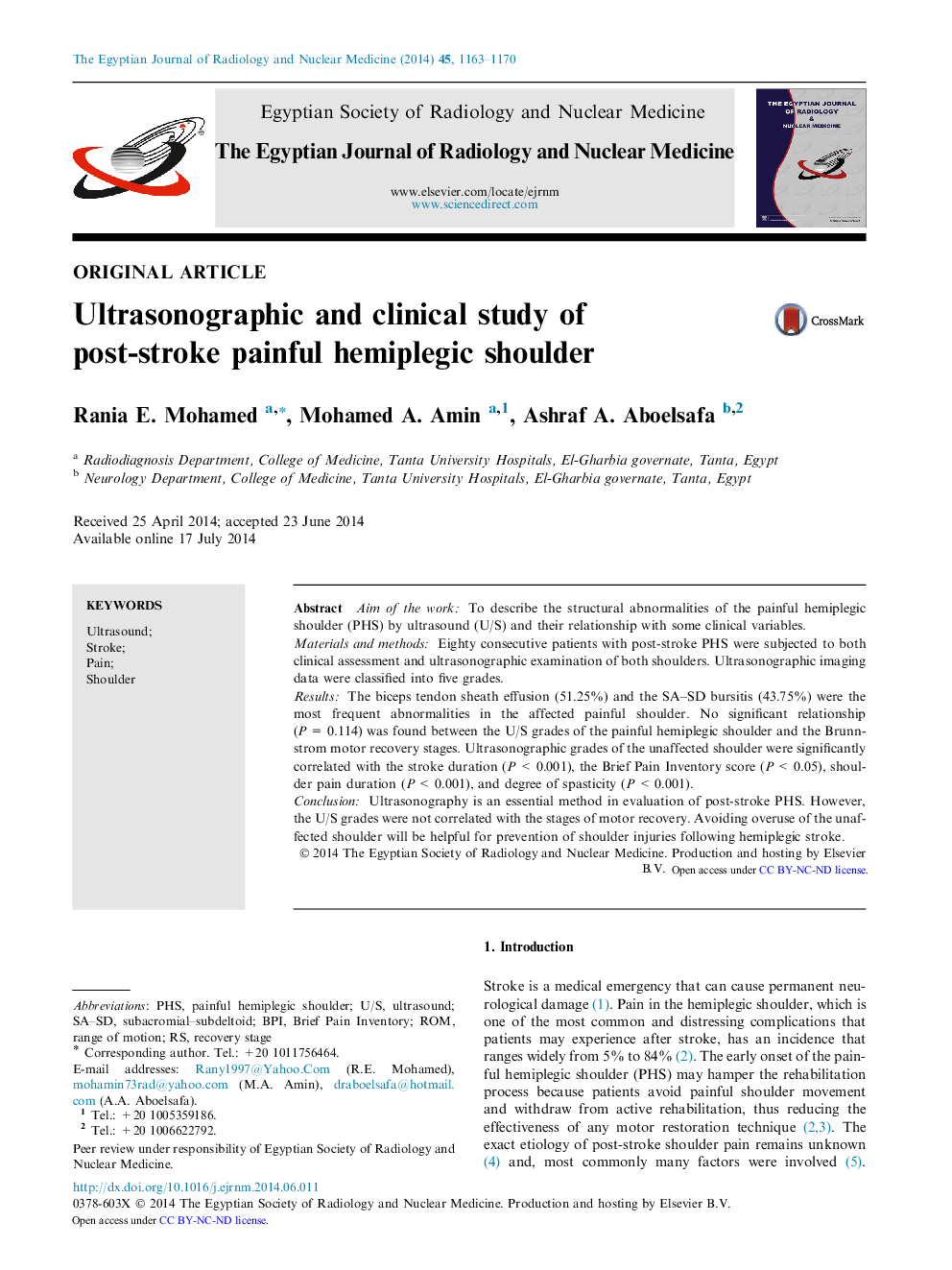| Article ID | Journal | Published Year | Pages | File Type |
|---|---|---|---|---|
| 4224308 | The Egyptian Journal of Radiology and Nuclear Medicine | 2014 | 8 Pages |
Aim of the workTo describe the structural abnormalities of the painful hemiplegic shoulder (PHS) by ultrasound (U/S) and their relationship with some clinical variables.Materials and methodsEighty consecutive patients with post-stroke PHS were subjected to both clinical assessment and ultrasonographic examination of both shoulders. Ultrasonographic imaging data were classified into five grades.ResultsThe biceps tendon sheath effusion (51.25%) and the SA–SD bursitis (43.75%) were the most frequent abnormalities in the affected painful shoulder. No significant relationship (P = 0.114) was found between the U/S grades of the painful hemiplegic shoulder and the Brunnstrom motor recovery stages. Ultrasonographic grades of the unaffected shoulder were significantly correlated with the stroke duration (P < 0.001), the Brief Pain Inventory score (P < 0.05), shoulder pain duration (P < 0.001), and degree of spasticity (P < 0.001).ConclusionUltrasonography is an essential method in evaluation of post-stroke PHS. However, the U/S grades were not correlated with the stages of motor recovery. Avoiding overuse of the unaffected shoulder will be helpful for prevention of shoulder injuries following hemiplegic stroke.
